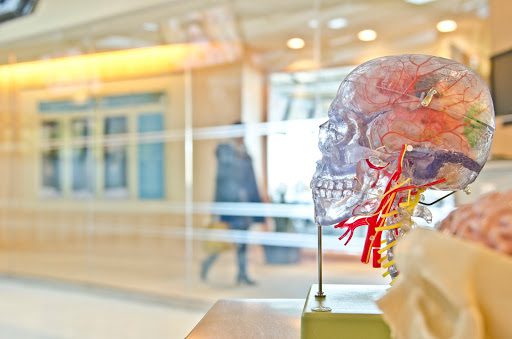Machine learning impacts our everyday lives, whether we realize it or not. It determines what we see while scrolling through Facebook, what we see when we visit a company’s website, and how we interact with brands on the internet. You see ads based on your personal research, the key words used in your searches, and your individual preferences.
What most people may not realize though is that machine learning impacts parts of your life you may not have even considered, such as your finances, your healthcare, and even the ways in which we communicate with one another.
While this may sound like something out of a sci-fi movie, it’s real and it plays a profound role in your life. Here’s a glimpse into how machine learning affects our daily lives:
What Is Machine Learning?
Machine learning is exactly as the name suggests – a machine learns, and it changes based on what it learned. Machine learning is a field of computer science that enables computer programs to refine their own abilities based on recognition of patterns. These patterns can include internet behavior as well as biometric data, as is the case with facial recognition software used in cameras. This form of artificial intelligence (AI) provides data to businesses and to other technologies that, in turn, share with us the information and products we want. While AI and machine learning aren’t exactly the same thing — namely, Artificial Intelligence is the overarching concept of machines performing intelligent tasks, and machine learning is the idea of giving those machines the tools to learn on their own — AI does play a large role in how machine learning operates.
AI is assisting you with everyday activities in the form of Siri, Alexa, Google Assistant and more. Even if you don’t use AI assistants intentionally, the technology impacts multiple areas of your everyday life, whether you realize it or not.
Here are just a few ways machine learning and AI are changing your life:
The Way We Do Business
Businesses use machine learning in a number of ways. Almost every modern company in the world uses AI to gather better data about its consumer base. This provides insights that enable companies to give customers a personalized experience based on their own individual preferences. Businesses can cater content, advertising, and even new products to you based on the information they collect.
In addition to personalizing content for their customers, businesses are also finding ways to use machine learning to automate their own everyday business dealings. From sending out emails to automating social media accounts, machine learning makes the marketing world go round.
Social Media
Business owners have realized that reviews, comments, and posts in online forums affect the value of their brand. Many of them are searching for ways to regulate negative comments regarding their businesses on the internet, since those comments often have the largest impact. Facebook itself uses AI to “proactively detect” negative content. While we don’t know exactly what the algorithm seeks (Facebook keeps this information private), we do know that it flags posts that fall into one of the following categories: nudity, graphic violence, terrorism, hate speech, spam, fake accounts, and suicide prevention. From there, the content is reviewed manually by a human who can discern the validity of the flag, and take action. The AI prevents us from having to manually review every single piece of content.
Social media attention, especially negative attention, can make a big impact on a business’s bottom-line. When Samsung’s Galaxy Note 7 went viral on social media for catching fire, the company lost 30 points on the stock market. Companies aren’t necessarily looking for these negative comments to get rid of them; rather, they want to become more transparent with their customer base by releasing statements or replying to negative comments in an official capacity.
Social media monitoring tracks important information about customers, making it easy for businesses to draw more accurate conclusions about their needs. When it comes to market research, social media is a gold mine for businesses and marketers. Based on what consumers are sharing, commenting on, and liking, marketers get an idea of how their businesses can better tailor their services and offerings to their consumer bases and optimize campaigns by gauging customer interest/satisfaction — and they are able to do it all in real time.
For example, if Joe B. Consumer tweets about needing new shoes, and also has liked and followed clothing companies and has searched these sites in the past, he is likely to start getting some targeted ads in his various social media feeds from these and related companies featuring shoes. These ads will also draw on Joe’s demographic statistics: male, aged 20-30, into sports — he’s likely to get some sports shoe-specific ads, along with complementary items such as team jerseys and baseball caps.
Finance
Machine learning also has a huge impact on finance. Imagine if employees at credit card agencies and banks had to sift through and evaluate the thousands upon thousands of transactions that occur every day by hand. There is no way they would be able to identify something out of the norm in time to stop fraud. By the time they would catch anything, the damage would likely be severe. AI, however, is able to detect anomalies. While anomaly detection is in its infancy — new platforms are actively being developed and improved upon — at its core, it works by running datasets through detailed computer analysis, a process that defines the parameters of normal behavior, so it can later detect anomalies in that behavior. The AI can alert consumers within seconds by monitoring data and statistics at rates faster than any fully staffed human team ever could.
There has also been an increase in the use of machine learning to improve credit scores for people with limited credit data. This can help individuals with little-to-no credit most efficiently improve their credit by making on-time payments on phone bills, rent, and utilities. The updates to FICO scoring formulas and the VantageScore 4.0 system use AI and machine learning to use your credit activity data to more accurately reflect your credit score.
AI can even identify spending patterns and assist individuals with managing their money. Budgeting apps such as Mint, Acorn, and You Need a Budget (YNAB) can take a snapshot of your finances and suggest a budget that may work for you based on your regular spending and earning.
Enhanced Healthcare
It is possible that hospitals and doctors’ offices may soon put your health into the hands of AI as well. Medical professionals use machine learning to help decrease the number of accidents patients have in their care, as well as the incidence of hospital-related illnesses such as sepsis (a life-threatening bacterial infection in your blood). They do this by aggregating patient data and analyzing it to find patterns and outcomes from similar cases so doctors and healthcare staff can anticipate issues that may arise and take quick and preventative action. Artificial intelligence also assists doctors in understanding genetic diseases better by allowing mass analysis of genetic disease data and research, and compiling it into more manageable sets of information for doctors and researchers to work with.
In the past, medical professionals had to review pages and pages of data, obscured by sloppy handwriting, to get a patient’s medical information. Everything was done manually, and everything had to be done before treating the patient – which takes time. Now, medical professionals can receive real-time information and insights into treatment methods based on the patient’s history and current symptoms. This data comes from electronic health records and can be supplemented by wearable health devices such as FitBits and Apple Watches. In fact, one man’s life was saved when doctors were able to use the heart rate data from his fitness tracker to inform their treatment decision in an emergency situation.
On top of that, machine learning will be able to assist in the development of new treatments, reduce the number of errors, predict potential reactions, develop vaccines to prevent potential disease outbreaks, and lower the overall cost of healthcare for patients and providers. With AI and machine learning’s abilities to analyze massive amounts of information that would take a lifetime for mere humans to sort through, and then combine it all into digestible data sets, doctors and researchers can get straight to using that information to further their research development. While some of this progress has yet to be seen, there is no doubt this machine learning and AI will change the way we look at medicine.
Machine Learning and the Future
While AI and machine learning may still seem like a futuristic dream, they already impact our lives each day. Computer programs learn patterns and associations and use them to provide meaningful data. AI technology is learning to recognize us, provide security, and assist our everyday lives. Think for a moment about your own life. What did you do today that used AI?
-
Ainsley Lawrence is a freelance writer that lives in the Northwest region of the United States. She has a particular interest in covering topics related to science, technology, and how both impact culture and health. When she’s not writing, her free time is spent reading and researching to learn more about her cultural and environmental surroundings. Follow her on Twitter @AinsleyLawrenc3.
View all posts







